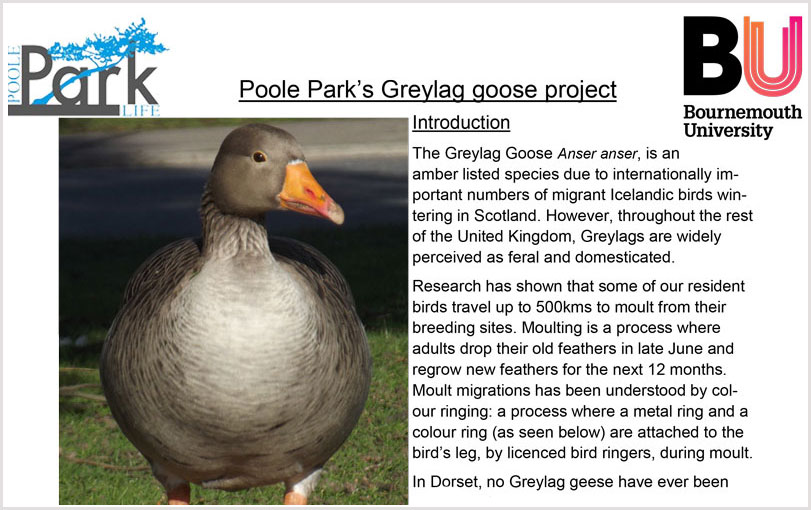As part of the National Lottery Heritage Funded project in Poole Park, every year we host students from Bournemouth University looking to gain practical experience as part of their studies, often degrees in Ecology, Sciences and Environmental studies. Previous research projects has included bird counts and observations, looking at the vegetation on the islands and public engagement on use of litter bins and attitudes to recycling.
This year we have a few students and one interesting and rather different project is set to ‘launch’ over the next couple of weeks. Thomas Weston is a volunteer with Birds of Poole Harbour and is a keen birder who is interested in Poole Park’s population of Greylag Geese (shown in the foreground below left). The Greylag geese generally reside in the park, raise their young and then once the moult has taken place they fly off…but no-one really knows to where. This is unlike the Canada Geese (below right) who only really arrive in the park in the summer and then leave again, enjoying the large areas of open grass and water to spend their vacation in.
The project seeks to understand the Greylag’s movement by moving them in to a holding pen, or corral, and then ringing them. The rings that go around their legs have a unique number that can then be used to monitor their movement across the region, with volunteers hopefully reporting sightings of the geese. The project has support from the Birds of Poole Harbour, the Slimbridge Wildfowl and Wetlands Trust (WWT), the Dorset Bird Club and the British Trust for Ornithology (BTO). Find out more about the BTO bird ringing scheme.
The corral and ringing takes place on Saturday 29th June and will seek to move the geese across the large freshwater lake in to a safe area on the bank of the lake, behind the houses of Twemlow Avenue. This area of the park will be closed off to the public during the event. If you are interested in this project or would like to lend a hand on the day Thomas would be pleased to hear from you via email at: tmcclung944@gmail.com and you can read more on his poster. We look forward to finding out more about the park’s geese population!




